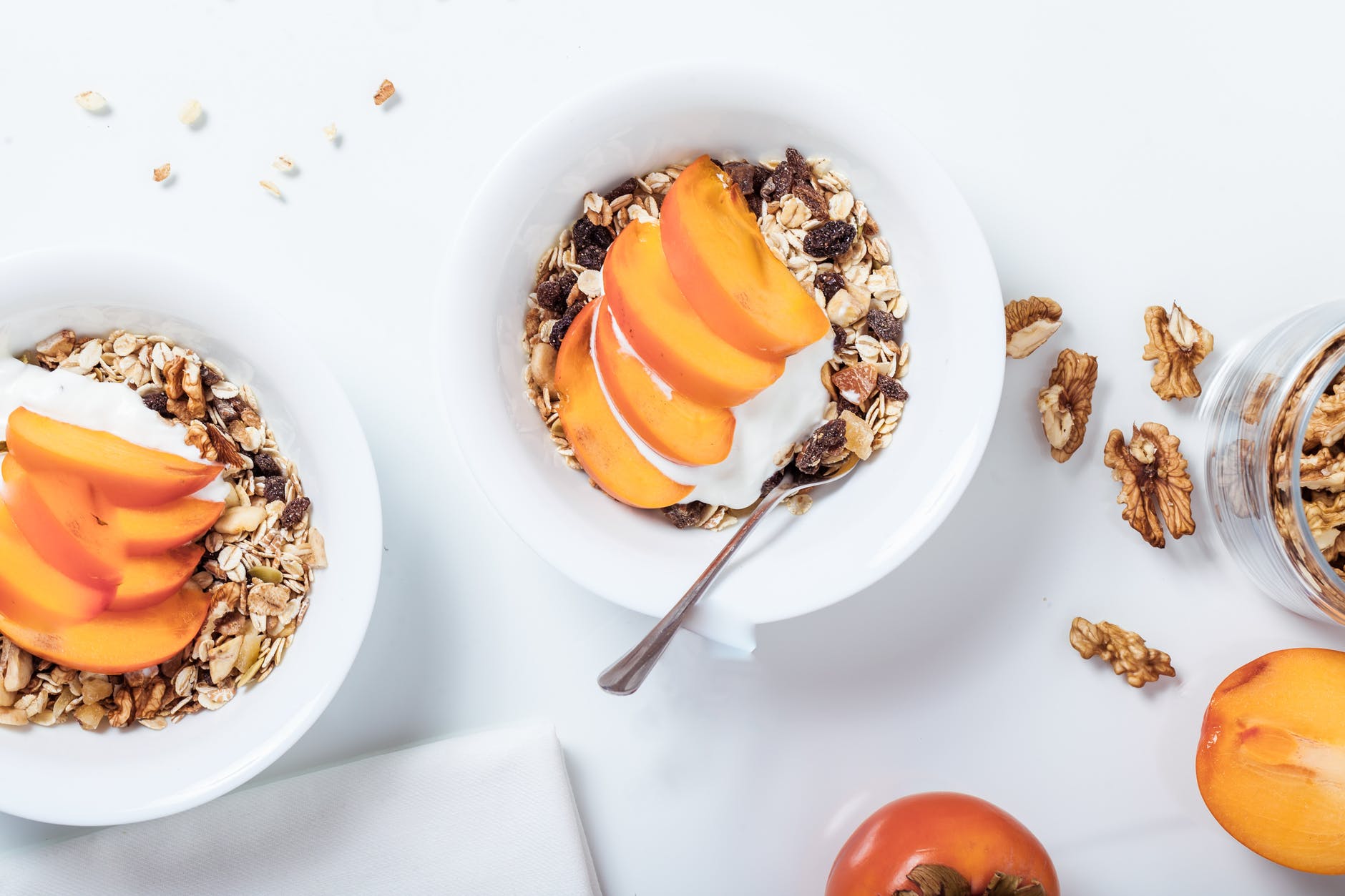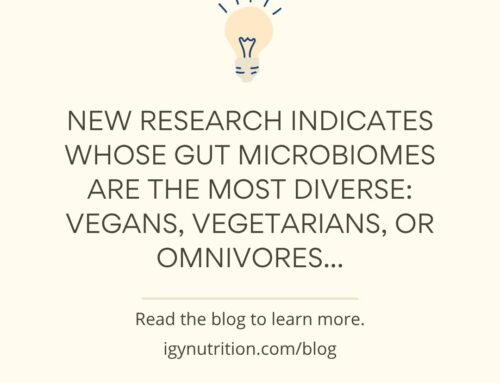Have you ever heard the phrase: “if you win the morning, you win the day?” We’re big believers in starting the day off right – especially when it comes to gut health. We figured it was about time we created a breakfast blog.
So how should you start your day off? Let’s take a look below.
The Keys to a Gut-Healthy Breakfast
Before we jump into recipes in our next blog, let’s talk about what makes a breakfast healthy for your gut.
Goals
Ideally, your first meal of the day would:
- Support your helpful gut microbes
- Propel microbiome diversity
- Encourage motility
- Regulate your blood sugar
- Satisfy your hunger
- Reduce excess inflammation
- Support gut barrier integrity
- Provide plenty of vitamins
- Taste great!
How-To
That sounds like a lot of goals, but in truth, they’re pretty easy to accomplish with one meal. How? It’s simple. Just include these five components:
- Fiber
- Probiotics (found in fermented food)
- Polyphenols (found in colorful plant-based foods and drinks)
- Protein
- Plant-based fats
Each of these components accomplishes quite a few of our objectives.
Fiber may:
- Supports your helpful gut microbes (1)
- Propels microbiome diversity (1)
- Encourages motility (2)
- Regulates your blood sugar (3)
- Satisfies your hunger (4)
Probiotics found in fermented food may:
- Support your helpful gut microbes (5)
- Propel microbiome diversity (5)
- Support gut barrier integrity (6)
Polyphenols may:
- Reduce excess inflammation (7)
- Support gut barrier integrity (8)
Protein may:
- Regulate your blood sugar (9)
- Increase satiety (9)
- Tastes great!
Plant-based fats may:
- Regulate your blood sugar
- Increase satiety
- Supports your helpful gut microbes (10)
- Propels microbiome diversity (10)
- Provide plenty of vitamins
- Taste great!
See how easy that was? Even including only two or three of these components in your breakfast could accomplish all breakfast goals.
You might be thinking – hold on. This doesn’t sound all that easy. How do I include fiber, fermented foods, polyphenols, protein, and plant-based fats in a single meal? Let’s take a look at which foods contain these.
Where to find fiber:
- Fruits
- Vegetables
- Grains like oats
- Nuts and seeds
- Legumes like beans
Ever had a smoothie for breakfast? What about oatmeal or peanut butter on whole-grain toast? Egg scramble with veggies? You’ve got fiber down.
Where to find fermented foods:
- Yogurt (plant-based counts too)
- Kombucha
- Kefir
- Tofu
- Sauerkraut, pickled onion, pickles
Calling all midwesterners: here’s your excuse to consume dairy during breakfast! Aim for low-sugar options if possible. Including tofu in your egg scramble, having a glass of kombucha or kefir, or adding some yogurt to your smoothie will do the trick.
Where to find polyphenols:
- All fruits
- All vegetables
- Coffee and tea
- Nuts and seeds
- Legumes like beans
Think about eating the rainbow when it comes to polyphenols. Did you know coffee is the largest source of polyphenols in the American diet? Drink up, coffee addicts!
Where to find protein:
- Meats (think sausage)
- Yogurt
- Eggs
- Tofu, tempeh
- Legumes, like beans
- Nuts and seeds
- Protein powders
If you include meat in your breakfast, make sure to cook it in a gut-healthy oil like olive oil. Aim for organic and antibiotic-free options too.
Where to find plant-based fats:
- Avocado
- Coconut
- Nuts and seeds
- Dairy-free yogurts
Plant-based fats are our favorite part of breakfast for a simple reason: they taste great! Ever had melted peanut butter on oatmeal with banana and cacao powder? If not, you’re missing out!
The Takeaway
We hope this helped you learn how to construct a gut-healthy breakfast. Remember: include fiber, fermented foods, polyphenols, protein, and plant-based fats to kick the day off right. Need some inspiration? Head over to our blog “Gut-Boosting Breakfasts Part Two: Recipes” for some recipes.
Thanks for joining us! Tag us in photos of your gut-healthy breakfast @igynutrition on Instagram.
References
- https://www.sciencedirect.com/science/article/pii/B9780128114407000119
- https://www.sciencedirect.com/science/article/pii/S221226721631187X
- Rivellese A, Riccardi G, Giacco A, Pacioni D, Genovese S, Mattioli PL, Mancini M. Effect of dietary fibre on glucose control and serum lipoproteins in diabetic patients. Lancet. 1980 Aug 30;2(8192):447-50. doi: 10.1016/s0140-6736(80)91886-3. PMID: 6106098. https://pubmed.ncbi.nlm.nih.gov/6106098/#:~:text=A%20high%2Dfibre%2C%20normal%2D,available%20carbohydrates%20in%20the%20diet.
- Clark MJ, Slavin JL. The effect of fiber on satiety and food intake: a systematic review. J Am Coll Nutr. 2013;32(3):200-11. doi: 10.1080/07315724.2013.791194. PMID: 23885994. https://pubmed.ncbi.nlm.nih.gov/23885994/
- https://www.sciencedirect.com/science/article/pii/S0966842X21000056
- Lamprecht M, Frauwallner A. Exercise, intestinal barrier dysfunction and probiotic supplementation. Med Sport Sci. 2012;59:47-56. doi: 10.1159/000342169. Epub 2012 Oct 15. PMID: 23075554. https://pubmed.ncbi.nlm.nih.gov/23075554/
- https://www.sciencedirect.com/topics/agricultural-and-biological-sciences/polyphenol
- Bernardi S, Del Bo’ C, Marino M, Gargari G, Cherubini A, Andrés-Lacueva C, Hidalgo-Liberona N, Peron G, González-Dominguez R, Kroon P, Kirkup B, Porrini M, Guglielmetti S, Riso P. Polyphenols and Intestinal Permeability: Rationale and Future Perspectives. J Agric Food Chem. 2020 Feb 19;68(7):1816-1829. doi: 10.1021/acs.jafc.9b02283. Epub 2019 Jul 2. PMID: 31265272. https://pubmed.ncbi.nlm.nih.gov/31265272/
- https://www.sciencedirect.com/topics/biochemistry-genetics-and-molecular-biology/dietary-protein
- Muralidharan J, Galiè S, Hernández-Alonso P, Bulló M, Salas-Salvadó J. Plant-Based Fat, Dietary Patterns Rich in Vegetable Fat and Gut Microbiota Modulation. Front Nutr. 2019 Oct 11;6:157. doi: 10.3389/fnut.2019.00157. PMID: 31681786; PMCID: PMC6797948. https://pubmed.ncbi.nlm.nih.gov/31681786/




